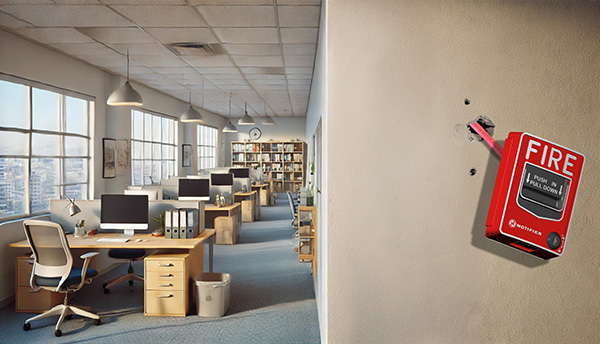Installation Best Practices.

Proper installation is critical for the effective functioning of alarm systems and for preventing false alarms. One of the primary aspects of proper installation is following manufacturer guidelines which is also required by NEC® 110.3(B). These guidelines provide specific instructions on how to install and configure each component of the alarm system to ensure optimal performance. Ignoring these guidelines can lead to improper installation, which can cause false alarms or system failures.
Ensuring secure mounting is another crucial factor. Sensors, alarms, and initiating devices must be securely mounted to avoid vibrations or movements that could trigger false alarms. For example, motion detectors should be firmly attached to walls or ceilings to prevent them from being affected by building vibrations or slight movements.
Below are a few examples of NFPA 72 code sections that address the proper securing of alarm system components:
- Section 14.2.6.4 requires suppression systems to be secured from inadvertent actuation, including disconnection of releasing solenoids or electric actuators, closing of valves, other actions, or combinations thereof, for the specific system, for the duration of the fire alarm system testing.
- Section 15.4 requires all manually actuated alarm-initiating devices to be securely mounted.
- Section 27.6.2.1.5 requires all alarm boxes to be securely mounted on poles, pedestals, or structural surfaces as directed by the authority having jurisdiction.
Common installation errors include poor mounting techniques, improper wiring, incorrect sensor placement, and failing to account for environmental factors. For instance, wiring that is not properly secured or insulated can lead to electrical interference, which might cause false alarms. Similarly, placing smoke detectors too close to kitchens or bathrooms can result in false alarms due to steam or cooking smoke.
Another important aspect is ensuring that all connections are secure, and that the system is properly integrated with other building systems. This includes checking that all wiring is correctly connected, that sensors are properly aligned, and that the control panel is configured correctly. By following best practices during installation, installers can significantly reduce the risk of false alarms and ensure that the alarm system operates reliably in an emergency.